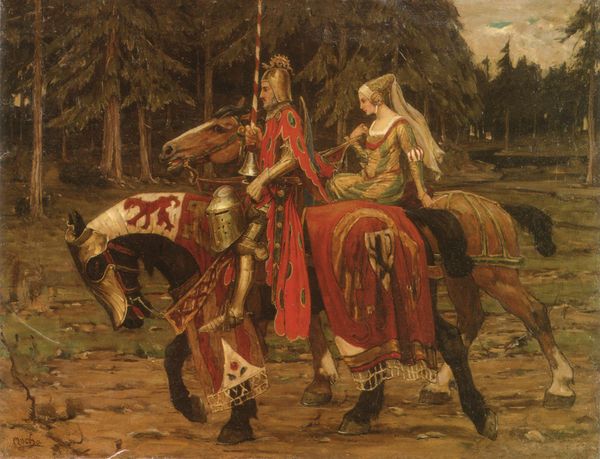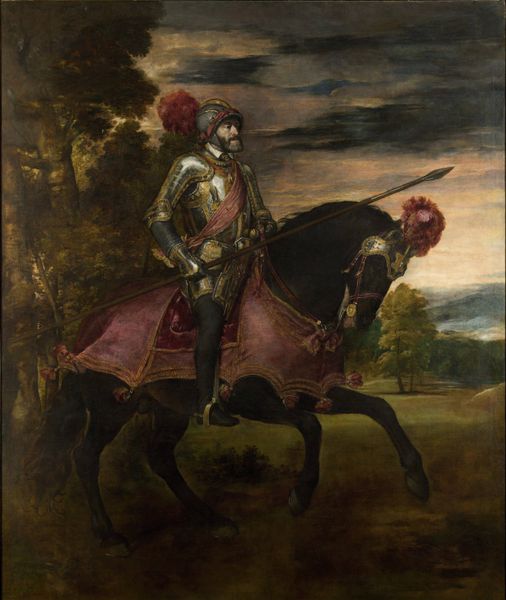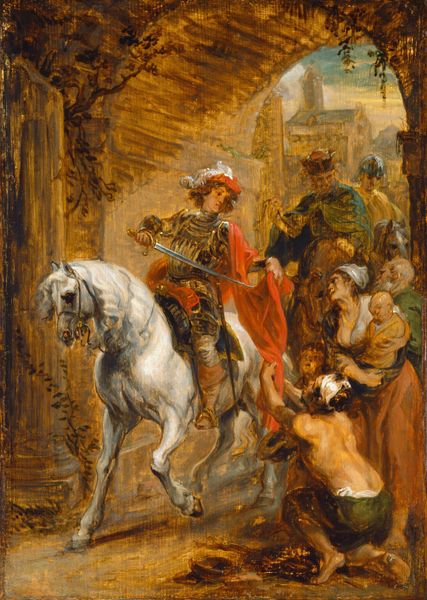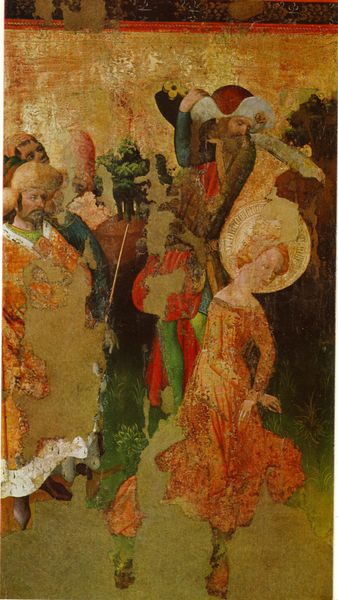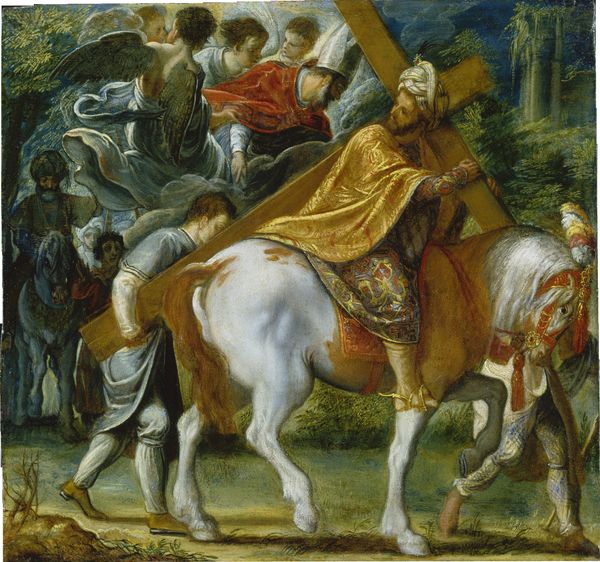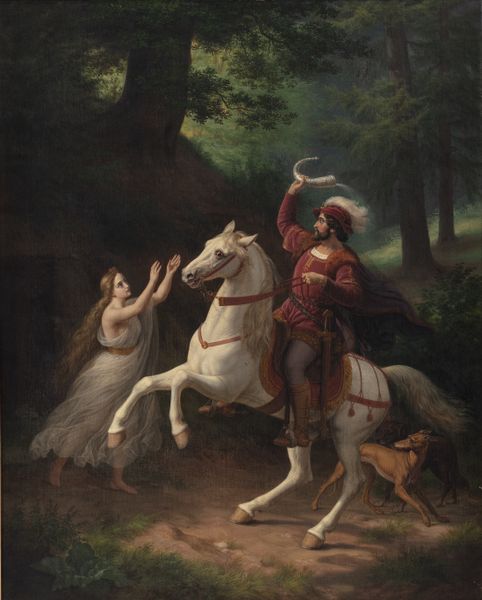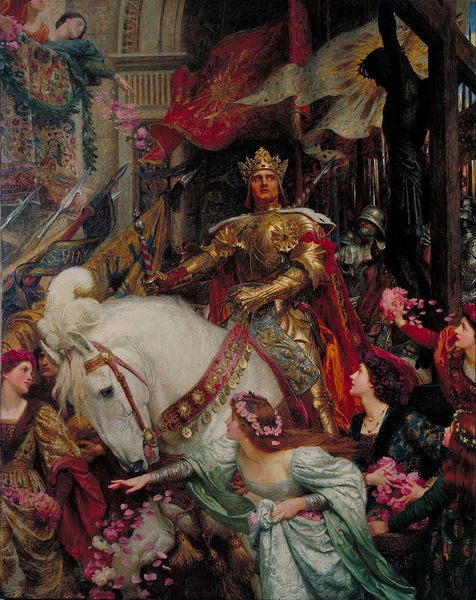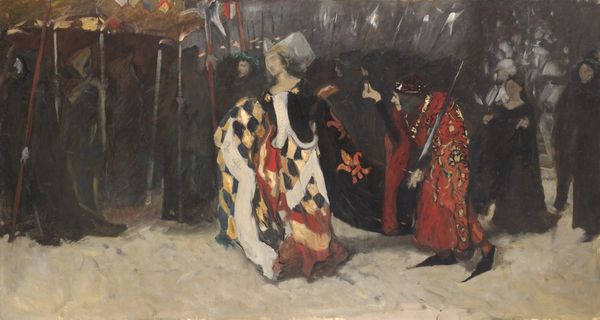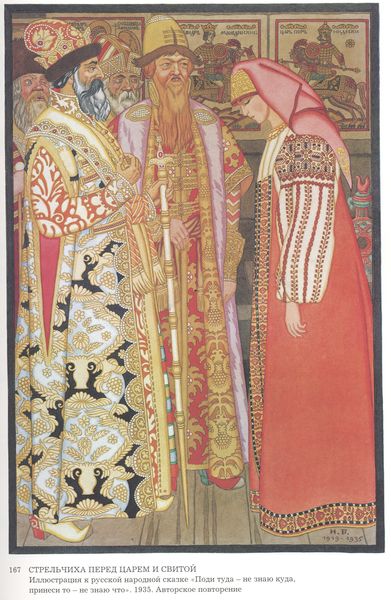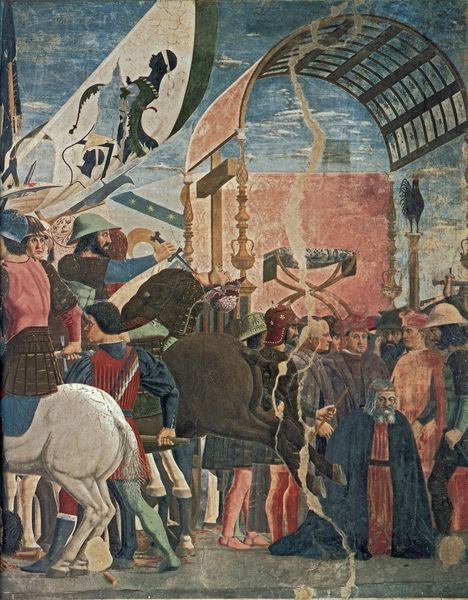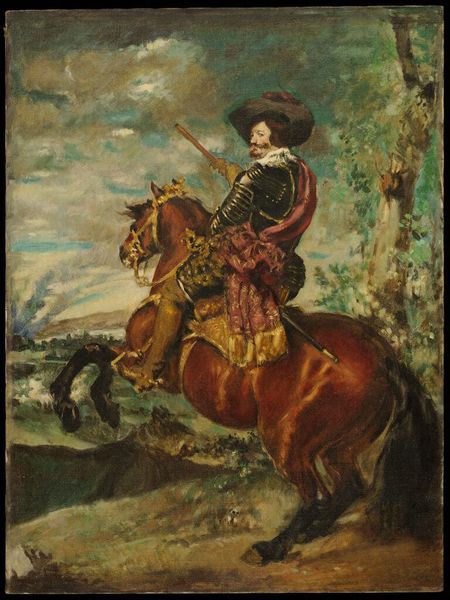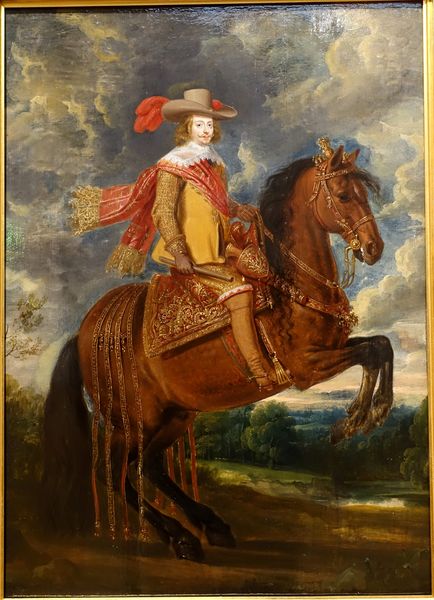
Copyright: Public domain
Editor: Here we have Edwin Austin Abbey's "Sir Galahad passes from the land", created in 1901 using oil paint and watercolors. I’m struck by how static the scene feels despite the implied departure. The kneeling figure really anchors the composition, but I am curious: what do you see in this piece, especially beyond the surface narrative? Curator: It is interesting that you point that out, what appears as a scene of chivalry is underpinned by significant cultural discourse. I see it as Abbey’s response to the social and political ideals prevalent at the turn of the century. Considering this was created at the peak of colonial power, think about how this glorification of the medieval knight serves as a parable for imperialistic virtues - a white, male figure departing on a noble, presumably civilizing, mission. How do the figures surrounding him play into this interpretation? Editor: Well, the subdued expressions of those left behind, especially the woman kneeling, could represent the sacrifices and the often-unacknowledged burdens carried by those who enable such ‘heroic’ endeavors. So it's less about pure heroism and more about power structures? Curator: Precisely. And consider the Pre-Raphaelite influence—the romanticized medievalism acts as a convenient vehicle. By focusing on an idealized past, they could bypass contemporary social issues while subtly reinforcing certain values. It is useful to look at how the artist utilises history painting traditions. It demands the audience think about more than just aestheticism, particularly what sort of gender dynamics this work reflects and how it is used as propaganda. Editor: So, while seemingly a romantic scene, it speaks volumes about societal roles and the era’s understanding of duty and sacrifice within a larger political context? I hadn't considered it in this light, it gives a much greater depth of what I originally observed! Curator: Absolutely. And that's the power of engaging with art through a critical, historical lens, isn’t it? We unveil the hidden narratives.
Comments
No comments
Be the first to comment and join the conversation on the ultimate creative platform.
